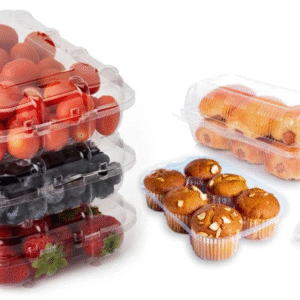Real estate has long been viewed as a solid investment, but the high cost of entry often keeps many potential investors out of the game. However, fractional ownership platforms like Lofty AI are transforming this space by allowing individuals to co-invest in properties, thus lowering the barrier to entry. By utilizing blockchain technology and artificial intelligence (AI), Lofty AI and similar platforms make property ownership accessible to a much wider audience.
If you are wondering how to make a platform like Lofty AI, you’re in the right place. This article will take you through the necessary steps, tools, and technologies you’ll need to build your own property co-ownership platform. We’ll dive into the key features, the development process, and the costs associated with building a successful real estate investment platform.
Key Features of a Property Co-Ownership Platform
1. Fractional Ownership
Fractional ownership is the core of any real estate co-ownership platform. With this model, multiple investors can share ownership of a property, represented by digital tokens. This reduces the financial burden on individual investors, as they can buy shares of a property for a much lower price than purchasing the whole asset. This opens up real estate investment to a broader audience and allows investors to diversify their portfolios.
Key Features:
-
Enables small investors to buy shares of real estate.
-
Investors benefit from rental income and property appreciation.
-
Lowers the barrier to entry by allowing fractional investments.
2. Blockchain Technology for Tokenization
Blockchain is at the heart of property co-ownership platforms like Lofty AI. By using blockchain to tokenize properties, the platform allows for fractional ownership through digital tokens. These tokens represent a share in a property, making it easier to buy, sell, and trade real estate investments. Blockchain provides transparency, security, and reduces the need for intermediaries, which speeds up the transaction process.
Key Features:
-
Tokenization of properties ensures easy transfer and trade of ownership shares.
-
Blockchain provides a secure and transparent record of ownership.
-
Eliminates intermediaries, streamlining transactions.
3. AI-Driven Property Valuation and Market Insights
Artificial intelligence (AI) plays a pivotal role in property co-ownership platforms. By analyzing vast amounts of historical data and market trends, AI can provide more accurate property valuations. Lofty AI uses machine learning algorithms to offer personalized investment recommendations and keep track of rental yields, market volatility, and other important factors. This helps investors make smarter decisions with minimal risk.
Key Features:
-
AI analyzes market data to offer accurate property valuations.
-
Personalized investment insights based on user profiles.
-
Real-time market tracking for up-to-date investment recommendations.
4. Liquidity with a Tokenized Marketplace
One of the main benefits of a tokenized property co-ownership platform is liquidity. Blockchain-based platforms like Lofty AI allow users to buy and sell property tokens on the platform, providing investors with flexibility and faster transaction times. Unlike traditional real estate, which can take months to sell, tokenized properties can be sold or traded quickly, offering greater liquidity.
Key Features:
-
Tokenized shares offer liquidity in the real estate market.
-
Buyers and sellers can easily trade property tokens.
-
Greater flexibility for investors to enter or exit investments.
How to Develop a Property Co-Ownership Platform Like Lofty AI
1. Define Your Platform’s Core Features
Before you start development, it’s essential to clearly define your platform’s core features. Think about what makes your platform unique. Will you focus on residential or commercial properties? What specific functionalities will you offer, such as AI-powered recommendations, blockchain tokenization, or fractional ownership? This is your platform’s blueprint, so make sure the features align with your vision.
Key Features to Include:
-
Fractional ownership and tokenization of properties.
-
AI-powered property insights and recommendations.
-
A liquid marketplace for trading property tokens.
2. Conduct Market Research and Legal Compliance
The next step in building a property co-ownership platform is conducting thorough market research. Understanding your target audience and competitors is key to creating a platform that stands out. Additionally, legal compliance is critical when dealing with real estate investments. You’ll need to ensure that your platform complies with local and international real estate laws, including securities regulations, KYC (Know Your Customer) requirements, and anti-money laundering (AML) rules.
Key Pointers:
-
Research the real estate investment market and competitors.
-
Ensure compliance with local and international real estate and securities laws.
-
Implement KYC and AML procedures for investor onboarding.
3. Select the Right Blockchain Network
The blockchain network you choose will be central to your platform’s operation. You need a network that can handle the scalability required for tokenization, offers low transaction fees, and supports smart contracts. Ethereum, Solana, and Algorand are all viable options for blockchain-based real estate platforms. Select a blockchain that fits your needs in terms of transaction speed, cost, and developer community.
Key Pointers:
-
Choose a blockchain that supports tokenization and smart contracts.
-
Look for a platform with low transaction fees and high scalability.
-
Ensure strong security features to protect user data and transactions.
4. Design the User Interface (UI) and User Experience (UX)
A clean and intuitive user interface (UI) is essential for your platform’s success. The design should make it easy for users to browse properties, view token details, and purchase shares. The user experience (UX) should be seamless, ensuring that investors can quickly and easily navigate the platform. A well-designed UI/UX will encourage users to return and invest more.
Key Pointers:
-
Focus on a clean, user-friendly design.
-
Simplify the property browsing and investment process.
-
Make sure the platform is responsive and works across multiple devices.
5. Develop Smart Contracts for Tokenization and Transaction Management
Smart contracts are crucial for automating property tokenization and managing fractional ownership. These contracts will automatically issue tokens, handle property transactions, and distribute rental income. Smart contracts help to reduce errors, increase efficiency, and cut costs by eliminating intermediaries. Test the contracts extensively to ensure they function securely and as intended.
Key Pointers:
-
Use smart contracts to automate property tokenization and transactions.
-
Ensure that contracts handle fractional ownership and income distribution.
-
Test smart contracts thoroughly to prevent bugs and vulnerabilities.
Essential Technologies and Tools for Your Platform
Building a property co-ownership platform requires the integration of multiple technologies:
-
Blockchain Frameworks: Ethereum, Solana, or Algorand for tokenization and smart contracts.
-
AI and Machine Learning: TensorFlow, PyTorch, or custom AI algorithms for property valuation and personalized recommendations.
-
Smart Contract Development: Solidity for Ethereum or Rust for Solana for developing secure and automated contracts.
-
Payment Gateway Integration: PayPal, Stripe, or cryptocurrency wallets for processing transactions.
-
Security: SSL encryption, multi-factor authentication, and secure data storage to protect user data and transactions.
Estimated Costs of Developing a Property Co-Ownership Platform
Developing a property co-ownership platform like Lofty AI can range in cost depending on the complexity of the platform and the features you want to include. A basic platform can cost anywhere between $50,000 and $100,000, while a more advanced platform with AI, blockchain integration, and a sophisticated marketplace could go well over $150,000.
Estimated Cost Breakdown:
-
Market Research & Planning: $5,000 to $10,000
-
Frontend and UI Design: $15,000 to $30,000
-
Backend and Blockchain Development: $25,000 to $50,000
-
Smart Contract Development: $10,000 to $25,000
-
Testing and Quality Assurance: $5,000 to $10,000
Why Choose Idea Usher for Your Platform Development?
At Idea Usher, we specialize in creating cutting-edge digital platforms that incorporate blockchain, AI, and seamless user experiences. Our team of expert developers can help you create a real estate co-ownership platform that is secure, scalable, and user-friendly. With over 500,000 hours of coding experience, we are dedicated to building custom solutions that meet your specific needs. Let us help you turn your idea into a fully functional, market-ready platform that will revolutionize the real estate investment space.
Conclusion: Building the Future of Real Estate Investment
The demand for property co-ownership platforms like Lofty AI is growing rapidly as more investors look for accessible and flexible ways to invest in real estate. By integrating fractional ownership, blockchain technology, and AI, you can build a platform that opens the doors to real estate investing for a broader audience.
With the right development strategy, legal compliance, and technology stack, your platform can help transform the real estate market, offering a secure, transparent, and accessible way for people to invest. Whether you’re a tech-savvy entrepreneur or an experienced real estate developer, now is the perfect time to create your own property co-ownership platform and tap into this growing market.





